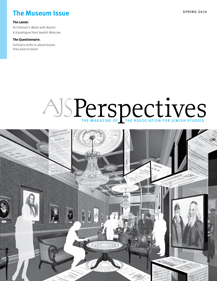David Shneer's article raises important questions about the role of ethnic museums in the construction and expression of ethnic identity in the United States. His insights about Jewish museums are in many ways relevant to the Hispanic/Latino community of Phoenix, which feels itself significantly underrepresented and misrepresented in established museums. As the former president of Chicanos Por la Causa expressed, a proposed Latino cultural center is meant to "show the other side of the community that we're not just gang bangers and other things that they think we are." Many questions have emerged about this center: Who will it serve? Why are so many Hispanic-operated museums in the country favoring the term Latino as opposed to Chicano, Mexican, or Hispanic? What are the politics of Latinization for U.S. Hispanic-operated museums?
As Shneer notes and as the Phoenix case study exemplifies, there are many tensions in the establishment and operation of any ethnic museum.
1. Empowerment vs. commoditization: Do ethnic museums construct ethnic identity in ways that empower minority communities to see themselves as equal citizens? Or do they construct it in ways that are easily digestible and marketable to a broad consumer audience?
2. Self-reflection vs. cheerleading: Do they function as spaces where communities can be self-critical or are they ethnic cheerleaders? Is ethnic cheerleading justified if it empowers a community that is the target of discrimination?
3. Insider vs. outsider audience: Do ethnic museums teach their home communities about themselves? Or do they educate a broader American audience about the value of cultural diversity?
4. Plurality vs. essentialism: Do ethnic museums reduce fluid and complex identities to essentialist voices? Or do they embrace diversity within their own communities?
As an organizer of the Exhibiting Ourselves symposium, I join Shneer in arguing for more responsive and visionary ethnic museums, and for the development of new critical approaches to cultural representation in museums and cultural centers.

